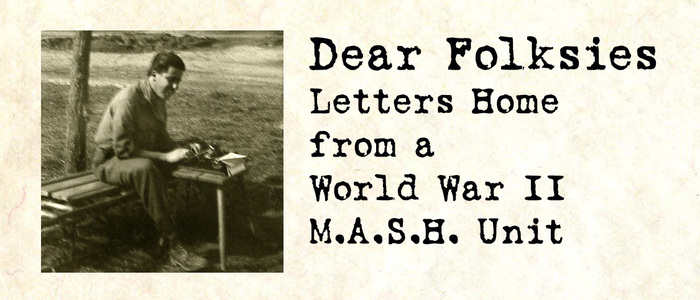You are here: Home / Glossary
Glossary
1906 heritage— is a reference to René’s father, who was a doctor in San Francisco at the time of the Great Earthquake and Fire of 1906. Despite being only 24-years-old, he was soon put in charge of the tent hospital set up in the Presidio to care for the injured and ill.
A certain 24 year old young man in 1906 — is a reference to René’s father. On the morning of the 1906 Earthquake in San Francisco, René Bine Sr., M.D. commandeered a horse at gunpoint with the declaration, “I’m a doctor, I have things to do!” Or, at least, that has always been the family lore.
AMGOT – “Allied Military Government for Occupied Territories” was the form of military rule administered by Allied forces during and after World War II within European territories they occupied.
Charlie Chaplain picture – a reference to “Modern Times,” a film in which Charlie Chaplain plays his Tramp character as a factory worker on an assembly line.
Cohn’s Commandos – the group (under the leadership of Roy Cohn, MD) that was the “advance party” for the 59th in North Africa and on D-Day in Southern France. In the South of France, the “commandos” included René, Chuck Schwartz and Paul Stratte.
Flit – a brand of insecticide spray
G.C. – Gonorrhea (gonococcal infection)
Kaiser production plant – a reference to the Kaiser shipyards in Richmond, which, employing assembly-line techniques, built 747 ships during World War II, a rate never equaled. Compared to the average ship built elsewhere, Richmond ships were completed in two-thirds the time and at a quarter of the cost.
LCI – Landing Craft Infantry, were several classes of seagoing amphibious assault ships used to land large numbers of infantry directly onto beaches.
LCT – Landing Craft Tank, a tank that was loaded onto an LST
Liberty measles – Instead of calling rubella “German” measles, they called them Liberty measles, Victory measles or “V” measles.
LST – Landing Ship, Tank or tank landing ship, is the naval designation for ships built during World War II to support amphibious operations by carrying tanks, vehicles, cargo, and landing troops directly onto shore with no docks or piers.
Luer – short for Luer syringe – a glass syringe used for hypodermic and intravenous purposes
Lues – an old name for syphilis. Pronounced “lou-ease.”
Lymphadentis – enlargement of the lymph nodes
Lymphagitis – inflammation of the lymphatic channels
Magic Powder – antibiotic powder sprinkled in wounds.
Maquis – rural guerrilla bands of French Resistance fighters.
Marpharsen – an early, arsenic-based drug for the treatment of syphilis.
Maudlin – Bill Maudlin was an American editorial cartoonist who won two Pulitzer Prizes for his work. He was most famous for his World War II cartoons depicting American soldiers, as represented by the archetypal characters Willie and Joe, two weary and bedraggled infantry troopers who stoically endure the difficulties and dangers of duty in the field.
M.C. – Abbreviation for Medical Corps of the U.S. Army is a staff corps (non-combat specialty branch) of the U.S. Army Medical Department consisting of commissioned medical officers – physicians with either an M.D. or D.O. degree, at least one year of post-graduate clinical training and a state medical license.
Numbers on René’s letters – Starting with the first letter he wrote after leaving the US, René numbered each letter to his parents (as did his parents on the letters they sent to him). They started again at No. 1 at the beginning of 1944 and 1945.
Paronychia – a soft tissue infection around a fingernail or toenail.
Pinch graft – a small piece of skin graft, partial or full thickness, obtained by elevating the skin with a needle and slicing it off with a scalpel.
Pityriasis versicolor – a common yeast infection of the skin, in which flaky discolored patches appear on the chest and back.
Purpura – a condition of red or purple discolored spots on the skin caused by bleeding underneath the skin, often the result of result of platelet, vascular or coagulation disorders.
Schick Test – a test used to determine whether or not a person is susceptible to diphtheria.
The Farm — Nickname for Stanford University. It was derived from the days when horses rather than students roamed in what previously was the farm of university founders Leland and Jane Stanford.
The four of us — Lois, René, Bob Treadwell and Charlotte Bambino (Bam)
The three of us — Lois, Alain and René
U.C. — University of California (probably UC Berkeley)
“V” measles – Victory measles — Instead of calling rubella “German” measles, they called them “V” measles, Victory measles or Liberty measles.
